How to Map Content Marketing to Revenue, in 3 Steps
When I was making the transition from journalism to marketing, my first big epiphany came from a caveman cartoon. The cartoon was in Moz co-founder Rand Fishkin’s Slideshare on Why Content Marketing Fails, which has over 6 million views and does a fantastic job illustrating why many companies struggle with content marketing ROI:
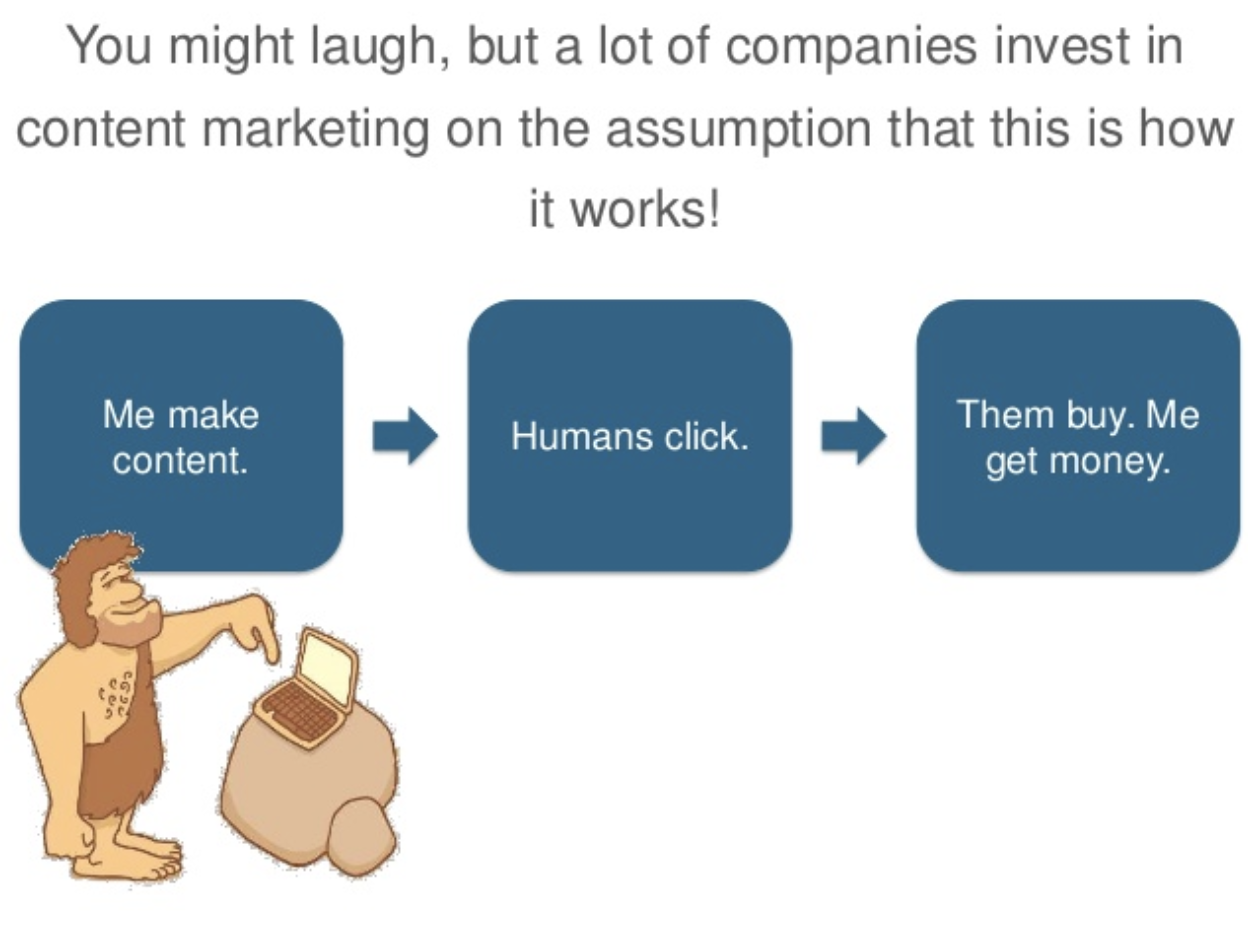
Some marketers expect content revenue to have a linear path. You make content, people click on it, and then—BOOM—they immediately buy something or fill out a demo request form. After all, if our search ads work that way, shouldn’t content work that way too?
It doesn’t, but that’s not a bad thing. Content is all about building trust and loyalty with people so that when they’re ready to buy something, you’re their first choice—driving continuous demand and making the sales process much easier.
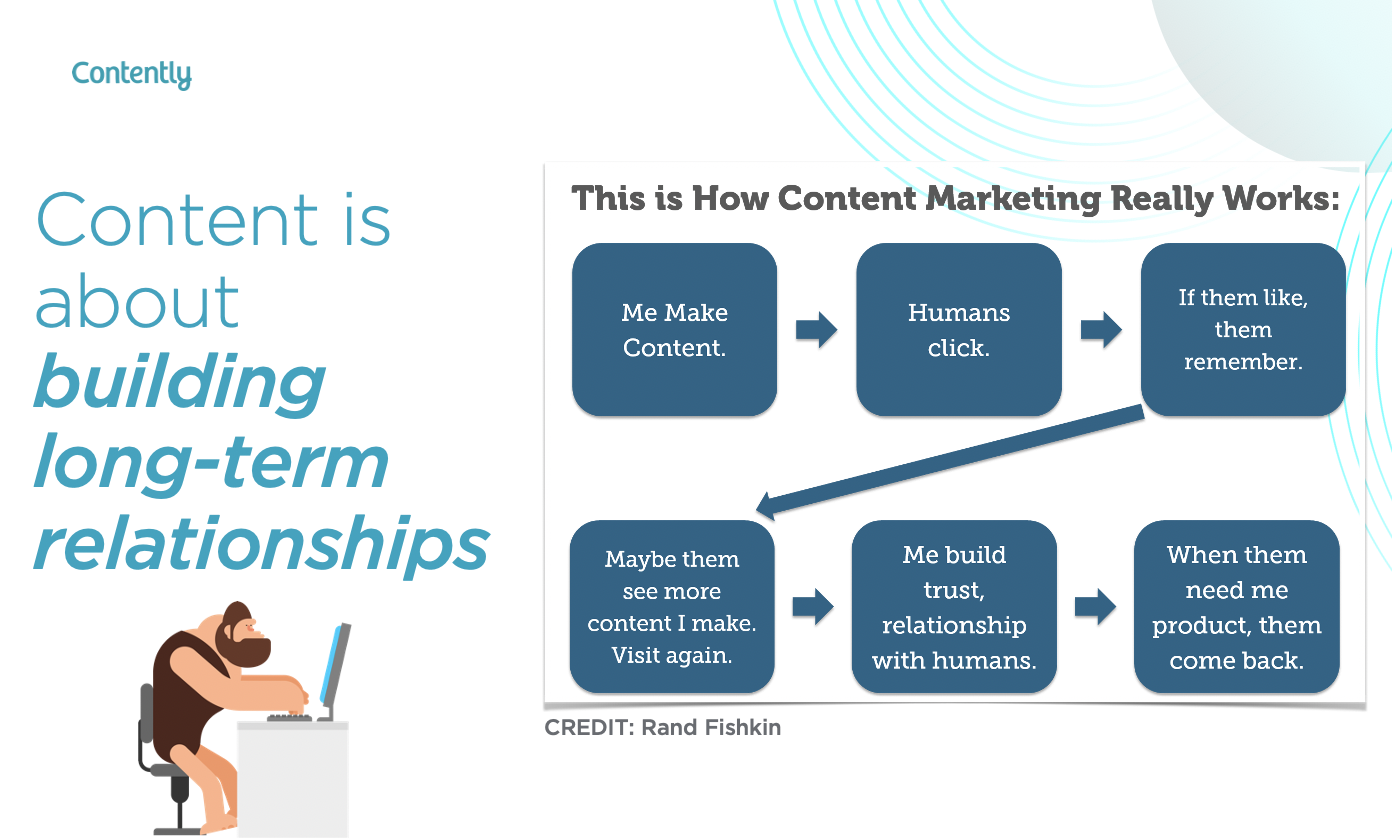
This is why we invest so much of our marketing budget in content at Contently. The vast majority of people don’t just read an article like this and request a demo. But they do come back and read something a few days later, then sign up for our newsletter or attend a webinar. When the time is right, they request a demo to learn how we can help.
While content conversion doesn’t follow a linear pathway, you can chart these stages to tie your content to revenue.
The 3 stages of content ROI
I’ve found it’s easiest to tackle content marketing ROI when you chunk it into three stages. The best place to start is at the upper half of the funnel, where you can map how your audience turns into sales-ready leads.
1. Audience growth
At this stage, you’re trying to make a damn good impression on your target audience in hopes of converting them to the next stage. You want to build awareness, trust, and an overall positive brand sentiment through helpful, entertaining content.
Most marketers are comfortable with the key metrics at this stage—they’re the ones Google Analytics shows you default: unique visitors, return visitors, time on site, pages/sessions, and scroll depth. Social metrics—shares, comments, likes—come into play here too.
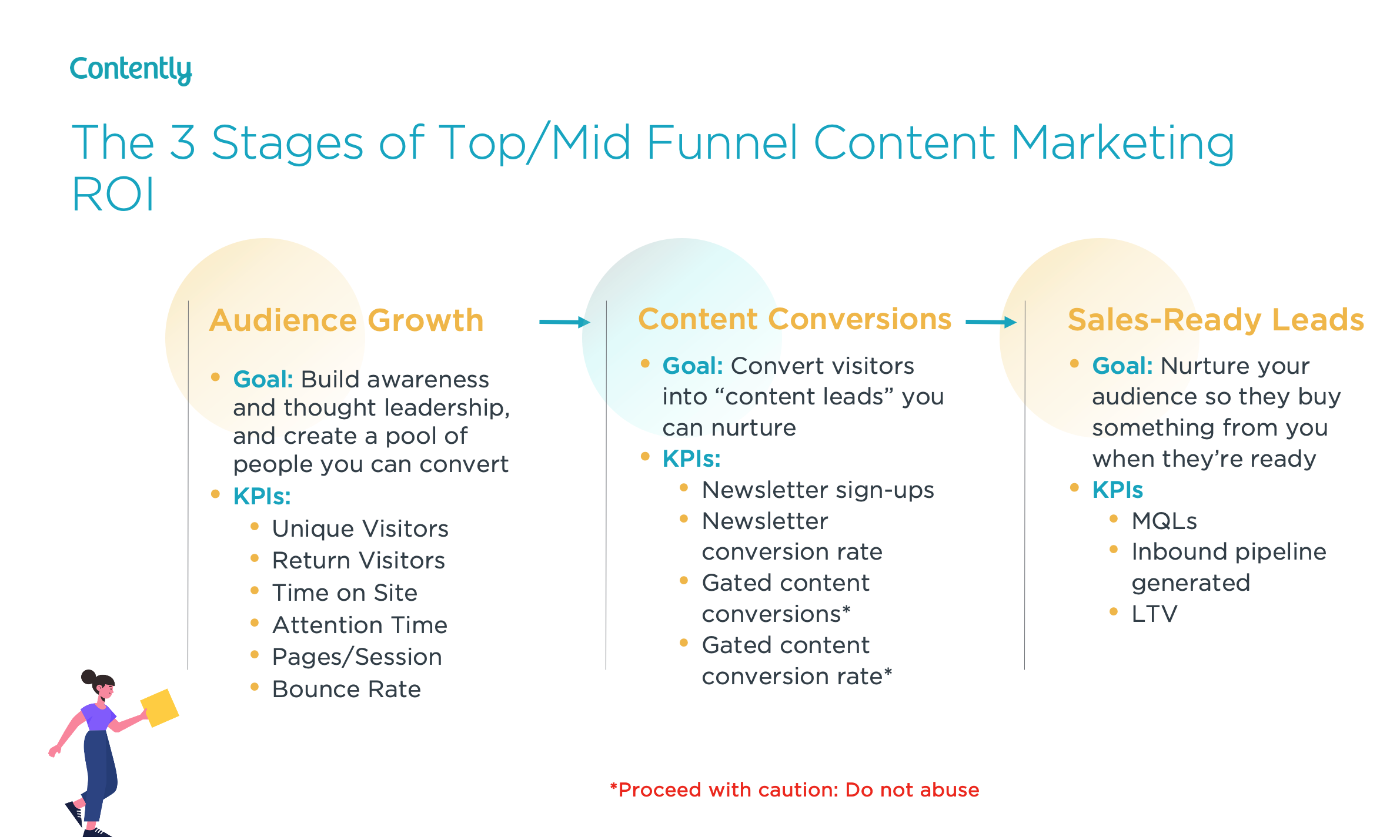
We’ll talk about how to maximize audience growth in a bit, but some content marketers tend to stop here. That’s a mistake because if you want to drive revenue from your content, you need to inspire people to take an action.
To drive more action, you want a strong SEO strategy that’ll bring in the right type of readers. For instance, we focus on ranking for keywords like “best content marketing platforms,” “how to write a white paper,” “enterprise content marketing,” “content marketing for banks,” and “b2b content marketing funnel.” These keywords are likely to attract people who are good customer fits for Contently.
You also shouldn’t be afraid to use paid distribution to reach more folks who fit your ideal customer profile. It’s a great way to grow the top of your content marketing funnel. It’s getting more effective, too, since paid content distribution costs are down 34 percent since March.
2. Content leads
A lot of marketers call anyone who downloads their e-book or attends a webinar a “lead,” but I find that misleading—particularly to your sales team. Just because someone downloads an e-book doesn’t mean they’re ready for a sales call. It’d be like if you downloaded Tinder and immediately got a passive aggressive voicemail from a wedding planner. These things take time.
I prefer to call these folks a “content conversion” or “content lead.” They’ve taken an action that’ll allow us to build a deeper relationship with them. Trust doesn’t magically build after one article. But if someone starts reading your newsletter every week, or attending hour-long webinars, or takes an educational course you made, that person is much more likely to become your customer in the future.
Your job is to make it as easy as possible for people to convert into content leads. Give them a few different options. For instance, we’ll offer free content resources each week on a blue bar across the top of our blog. Right below it, there’s a sticky button to subscribe to our newsletter.
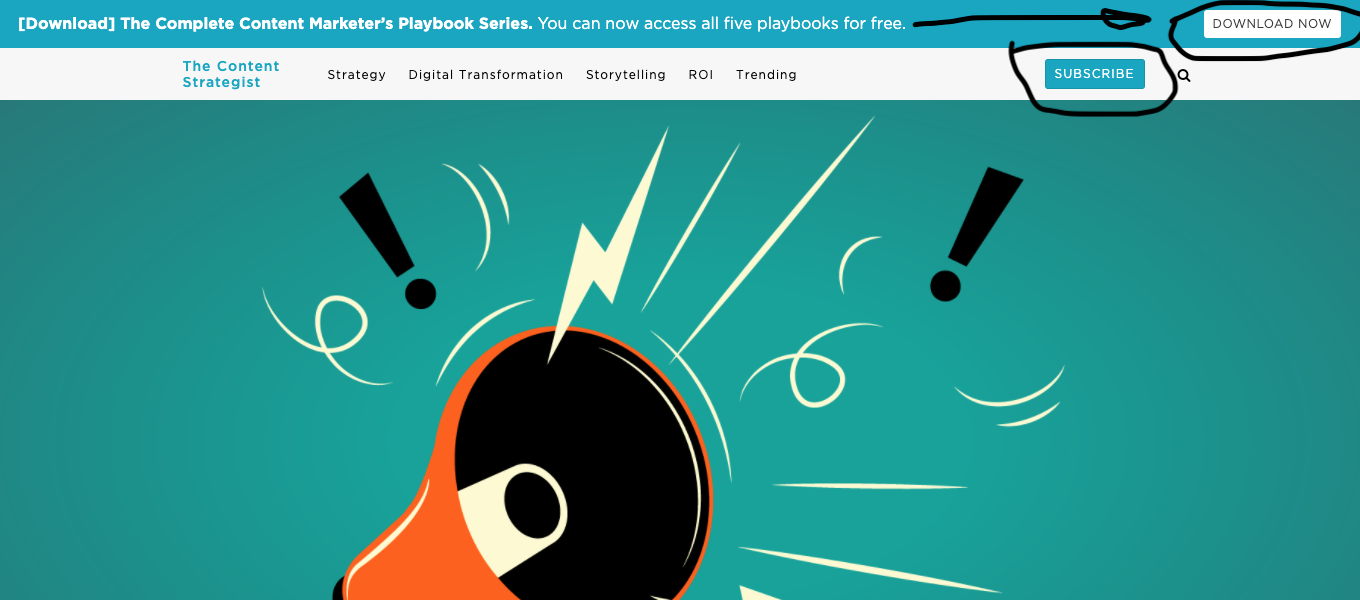
Once a month, we’ll also target each visitor with a prompt to sign up for our newsletter using Sumo, which converts at almost a 3 percent rate.
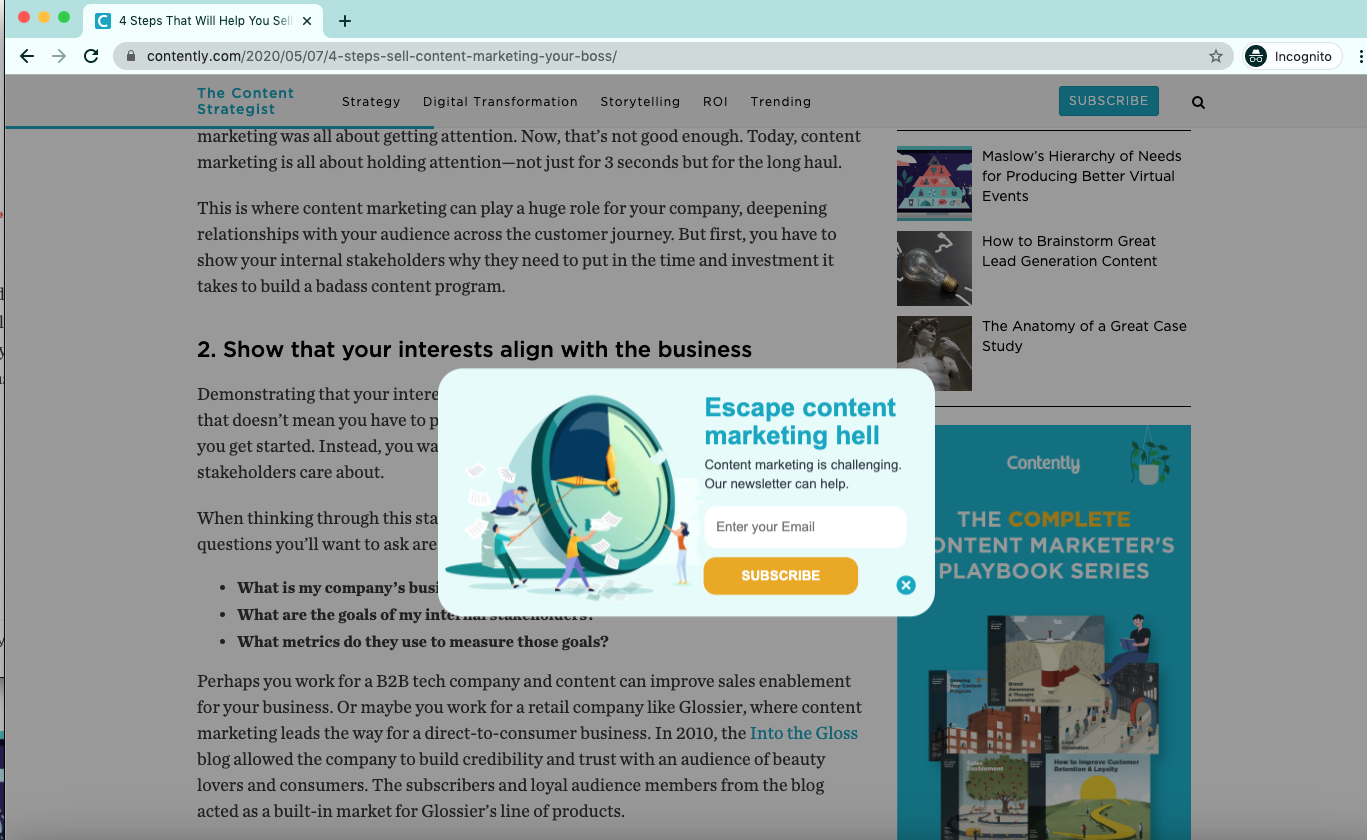
We also include a content offer unit on the right rail. We’re a tech company, so we don’t need to sell ads, but we can still put that white space to good use.

If you want a B2C example, Marriott does a great job of using smart UX on its popular travel mag, Marriott Bonvoy Traveler, to maximize conversions.
(Disclosure: Marriott is a Contently customer.)
Here, you want to track both the number of content conversions as well as the rate your visitors convert to one of your content offers. Google Analytics conversion goals are a great tool to do this. (Check out Andy Crestodina’s guide for more.) And you need to properly nurturing content leads through a marketing automation platform until they become sales-ready leads.
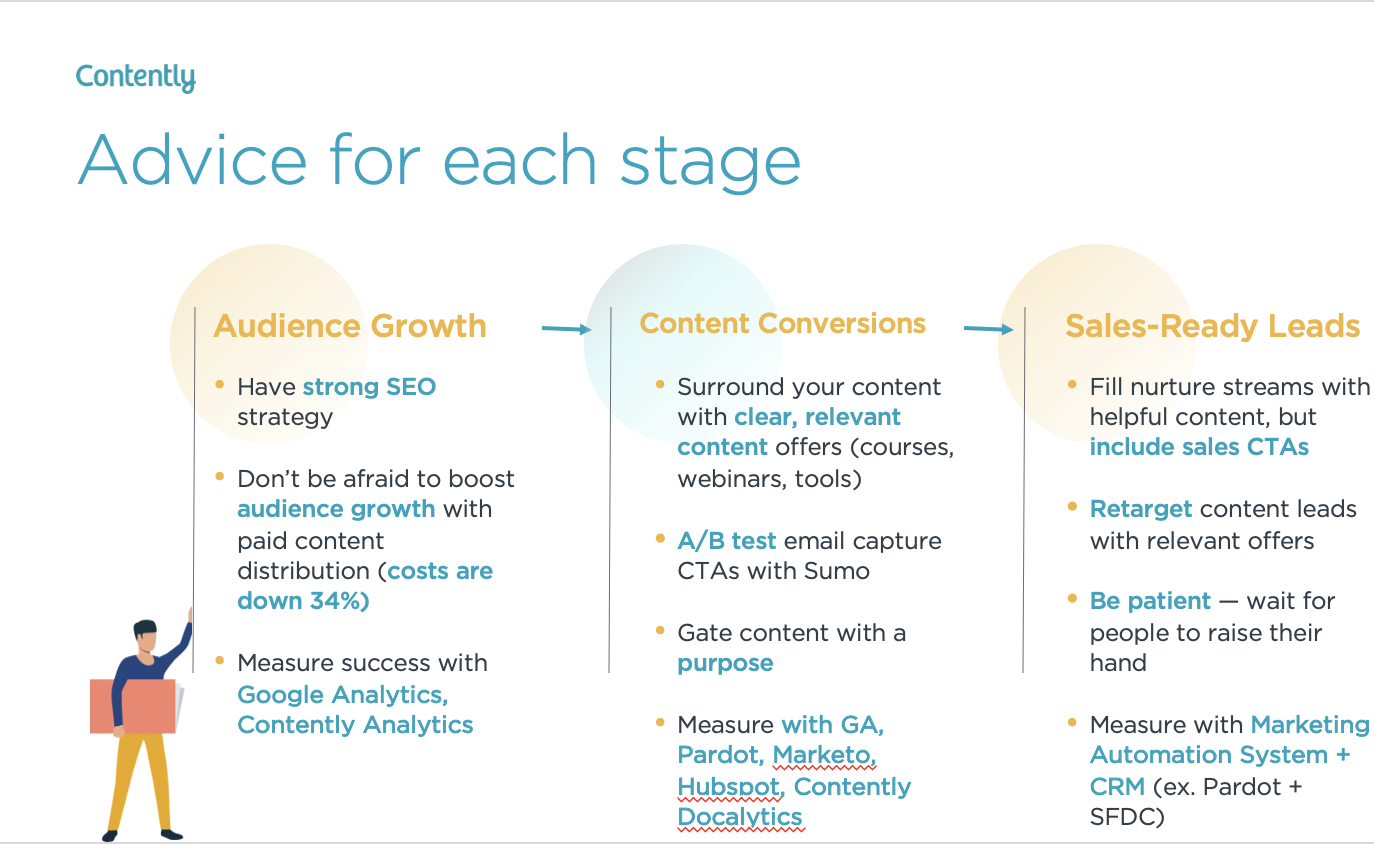
3. Sales-ready leads
Next, you want to nurture your content leads until they become sales-ready. What is a sales-ready lead? Someone who’s raised their hand and asked to learn more about your product, usually by filling out a form on your website.
At this stage, you want to nurture your content leads with a drip campaign of relevant content. If someone signed up for a webinar on content marketing ROI, follow up with additional articles, case studies, and product videos that cover the topic. Feel free to include a call-to-action to talk to sales. You want to make it easy to convert—but only after you’ve delivered valuable content.
Once those leads hit sales, you can drive a massive amount of additional ROI through a strong sales enablement strategy. That’s the topic of a whole other blog post, which you can read here.
Making your own map
To tie content to revenue, track your conversion rates at each of these three stages and map how content flows downstream until someone becomes a sales-ready lead.
Say we drive 100,000 unique visitors at the audience growth stage. Based on our conversion goals, we know that 1 percent will sign up for a webinar or another content offer, while another 2-3 percent will sign up for our newsletter. This translates to 1,000 webinar sign-ups and 2,000 newsletter sign-ups.
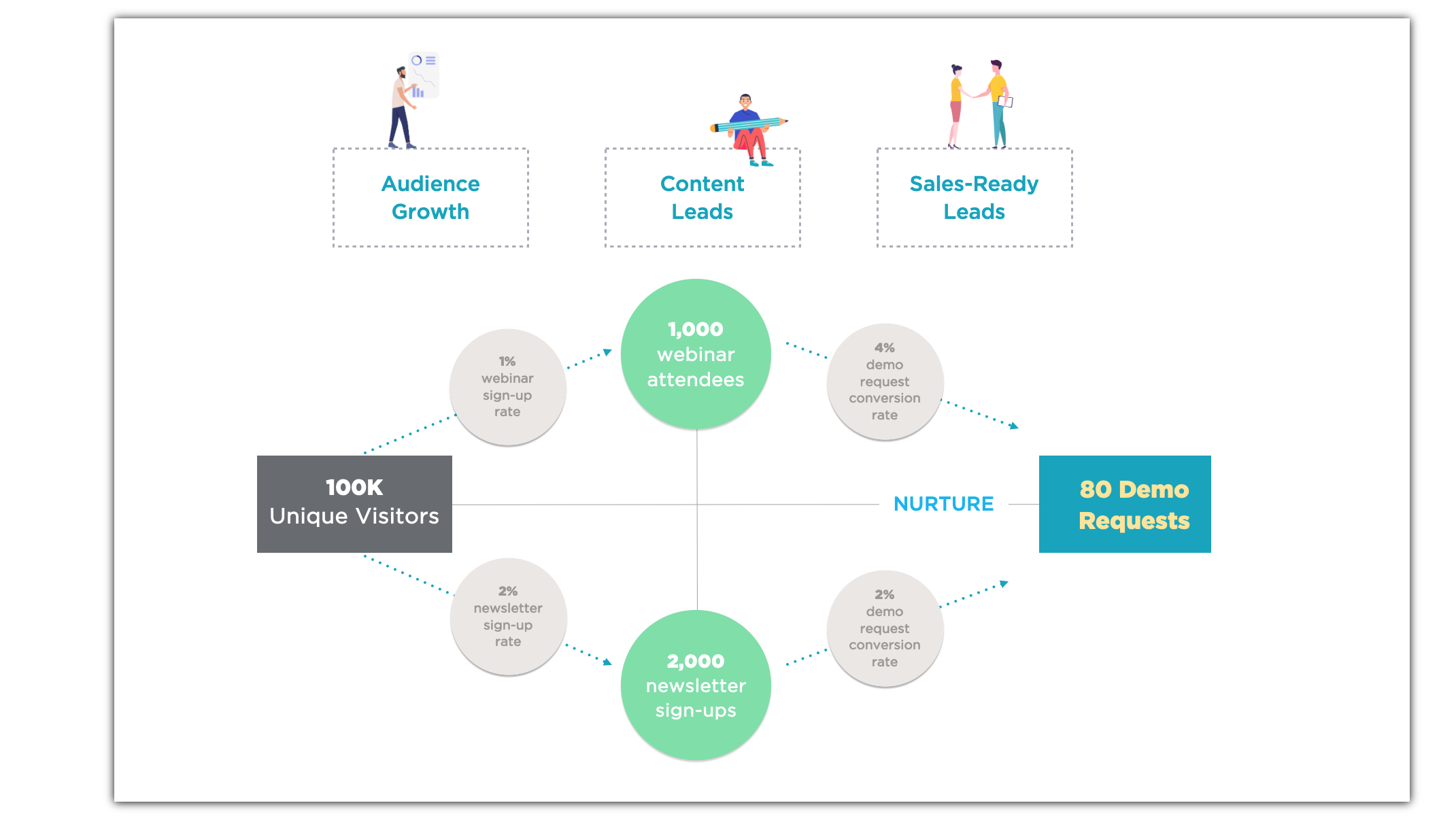
Next, via our marketing automation platform, we look at the rate at which our webinar attendees and newsletter subscribers convert to demo requests. Our model shows that for every 100,000 visitors to our blog, we’ll generate 80 demo requests.
Then, to get all the way to revenue, you just need to understand how much each sales-ready lead is worth to your business. Say that your average deal size is $100,000, and each lead converts to a sale at a 5 percent rate. In that scenario, each demo request adds $5,000 in weighted pipeline, and those 80 demo requests are worth $400,000 to your business.
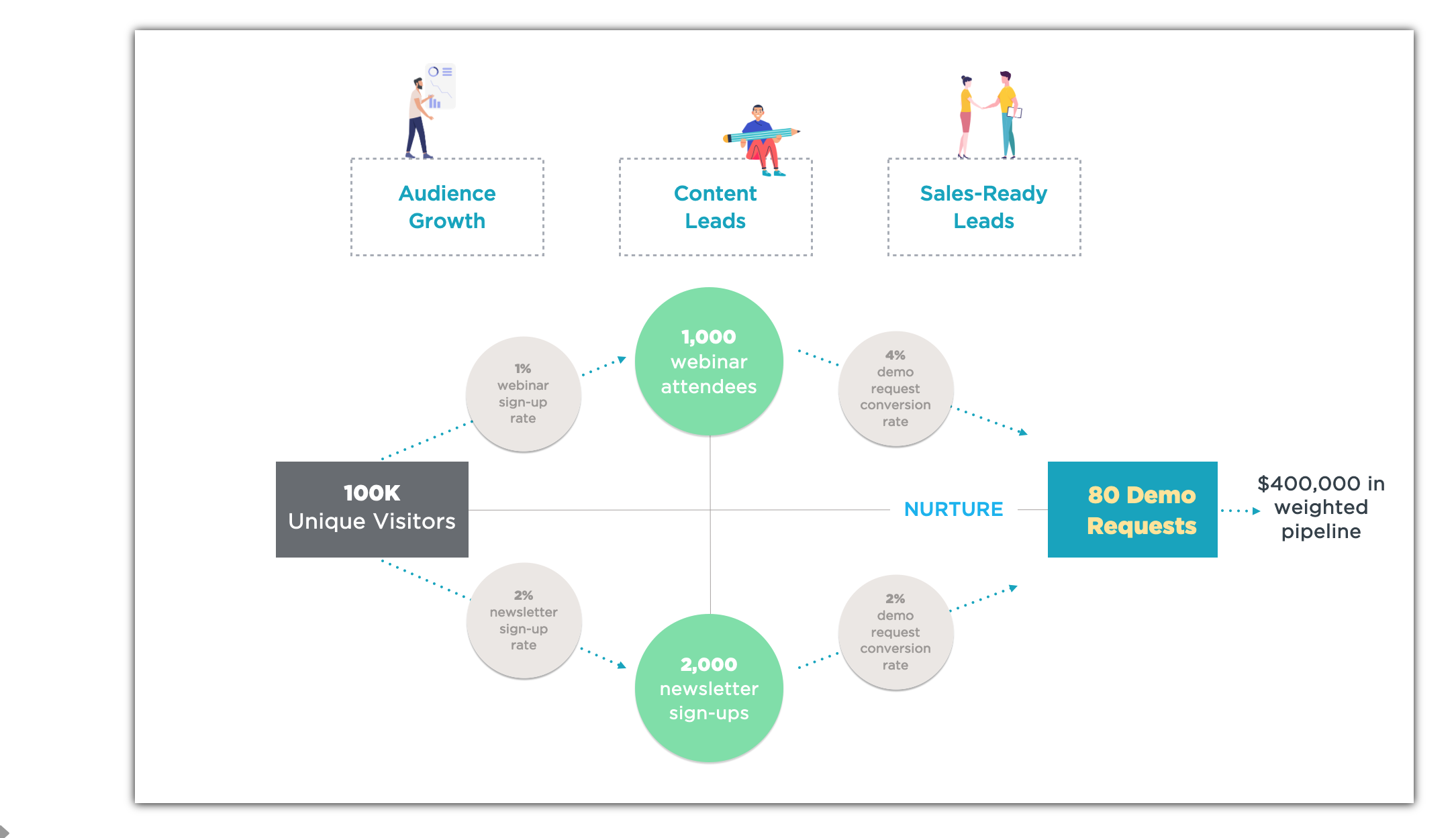
The compounding returns of the content marketing funnel
The great news about content marketing is that when it’s done well, you’ll see compounding returns over time.
Most marketing is fleeting. Spend $500 on ads today, and you’ll have to spend again tomorrow to see the same results. But spend $500 on a piece of great content today and it will drive continuous traffic and leads for free—by ranking well for search, getting shared on social, engaging website visitors, and increasing newsletter engagement.
As I wrote last month, this phenomenon is called the compounding returns of content. Even as your monthly investment in content remains flat, the results will compound over time. And if your content marketing funnel is set up correctly, that audience growth will translate into sales.
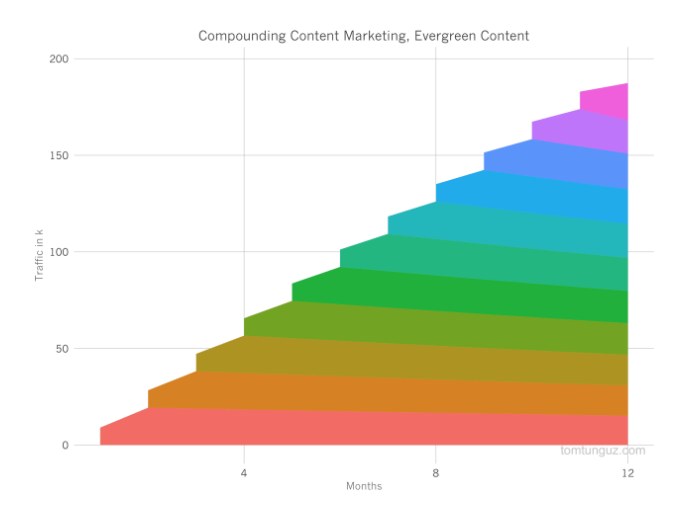
There’s never been a better time to build your audience. Engagement with branded content is up 16 percent right now, and people are eager for insights and thought leadership that will help them overcome new challenges and do their jobs better.
Help them overcome those challenges while following the guidelines here, and you’ll build a content marketing machine that’ll deliver compounding revenue for years to come.
This article is based off my webinar, How to Make the Case for Content Marketing: Compounding Returns and ROI. Watch it on demand here.
Get better at your job right now.
Read our monthly newsletter to master content marketing. It’s made for marketers, creators, and everyone in between.




